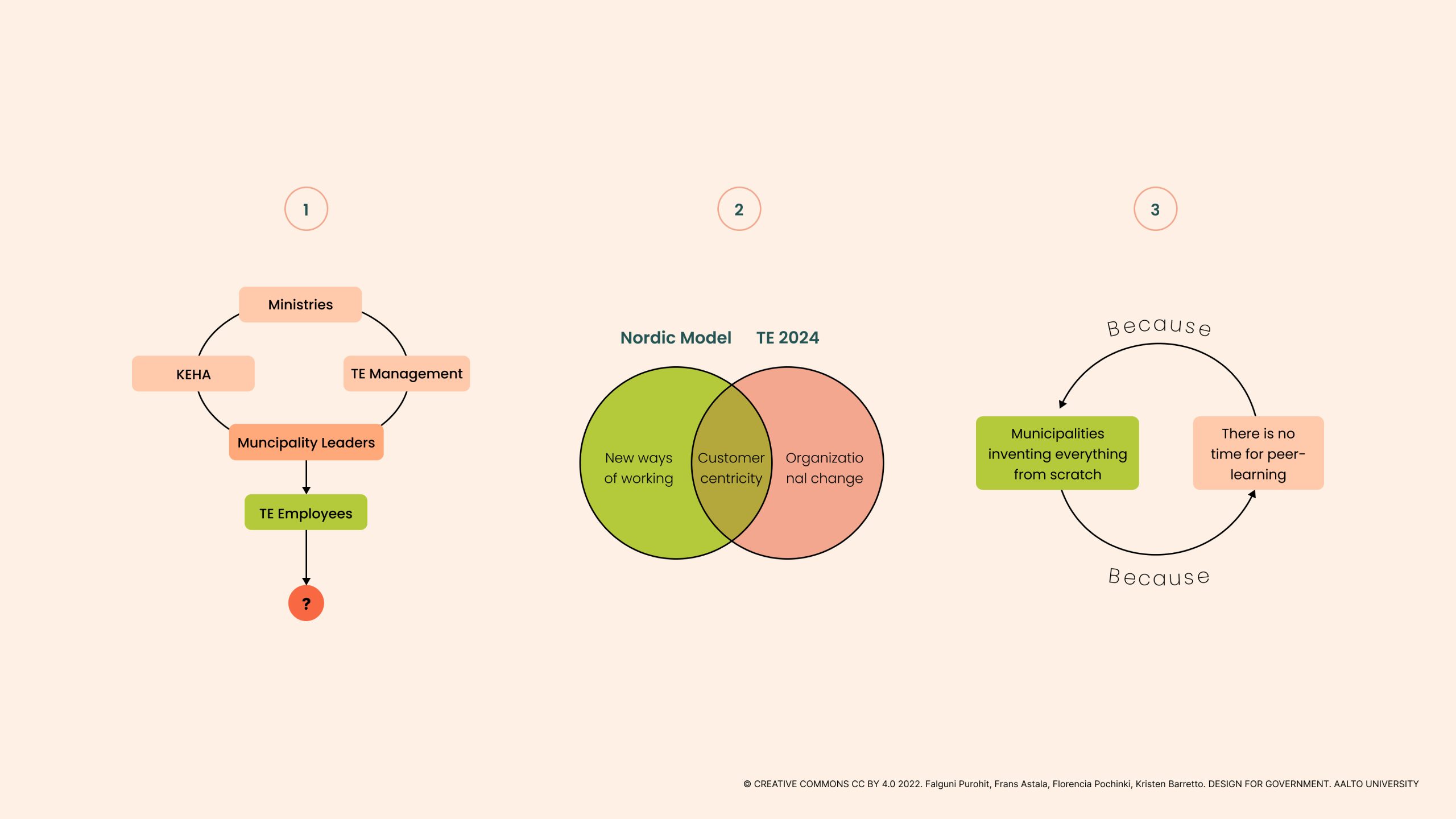This blog post reports on work-in-progress within the DfG course! The post is written by group 2A dealing with the Ministry of Finance’s brief on Orchestrating public governance in employment services (TE2024) by focusing on the public servants’ needs in the new reform model. The group includes Kristen Barretto from the Collaborative and Industrial Design program, Frans Astala and Florencia Pochinki from the Creative Sustainability program and Falguni Purohit from the International Design Business Management program at Aalto University.
Written by : Falguni Purohit
In the last blog post we looked at our attempts at understanding the goals of the reform (TE2024) and its catalysts and trying to outline challenges from a humane perspective. After initial understanding and sense making, the last two weeks focused on hearing from employees whose everyday activities this reform is having/will have an impact on and identifying larger clusters or themes in order to find focus and intervention areas.
Unearthing challenges, triumphs and expectations with on-the-ground employees
After initial research and its synthesis we realised that the TE2024 reform is a large system in itself and all its entities or participants have interdependencies when it comes to legislative, planning, informative and implementation activities. A system is an interconnected set of elements (employment service organisations in our case) that are organised to fulfil a certain purpose (the reform). To further understand where the pain points are situated in this loop and who they are most challenging for, we conducted interviews with representatives from most of the organisations in this system. The aim was to hear their experiences and find connections for the negative experiences or challenges, that is, identify the starting point or the root of the problem within the system of this reform and when it comes to positive experiences, outline ways to make use of their best practices in a way that helps other organisations.
A lot of everyday challenges and feelings about the reform and its communication to employees surfaced during these conversations. This also helped us understand the magnitude of certain problem areas beyond our assumptions. Our interviewees comprised of TE employees at customer service levels, Kela’s customer service personnel, Planners from pilot municipalities, and representatives from Kuntaliitto and KEHA.
Here are a few quotes that gave us an idea of the spirit of current reform transitions –
- “The main problem is that this is such a messy thing and there are so many levels, there are not many people who get the big picture or can facilitate these discussions.” – Kuntaliitto Employee
- “I do everything differently now, because my job did not exist before.” – Planner at the Helsinki pilot
- “When do we get to this normal state?” – TE Employee
- “Usually when there is a reform/big changes, they wait till the last minute to inform us about these changes, like a few weeks in advance.” – KELA customer service personnel
- “The current system functions as an unemployment benefits controller instead of an employing service.” – Researcher at the Espoo pilot
Once we went through a process of analysing all our interviews, we began identifying common themes which were mentioned by a lot of employees. We then put these together visually with the theme in the centre and evidence (quotes) around it. This is what we refer to as an ‘Affinity map’.
Current interactions and changing relationships between employment service entities
Parallel to conducting these interviews we were working on creating a system map in order to see what are the roles of different organisations in relation to one another, hierarchies of information flow, and cause and effect relationships of different reform activities. Always having this visual to go back to help us have the context of this reform, main stakeholders, and the bigger picture as a canvas to situate our insights or interview findings.
How we chose to structure our systems map is to first outline the hierarchy of the reform decisions (by organisation) and then add a layer with all the roles these different organisations play and another layer with how these roles change after the reform. After having this meta-level overview we moved on to focus on smaller groups or loops on the map and identified more specific challenges which we then juxtaposed with data we gathered from our interviews.
This gradual development of the TE2024 reform system now leaves us with a comprehensive structure of roles, challenges, and perspectives of different organisations and their employees. What this will now help us do is find the perspective we want to focus on and identify points of leverage or intervention where we can help design a change.
Three problem segments at the grassroots
After having analysed all the information we have so far by itself and as a part of the interconnected system of the reform we outlined three problem areas that were of concern to a large number of interview subjects. These three segments are –
- TE employees’ under involvement in the reforms planning processes.
- The goal overlap between different ongoing reforms which leads to a lack of motivation in implementing either one effectively.
- The vicious cycle of having no time for peer-learning due to the burdensome task of creating new organisations even though peer-learning would reduce this burden.
In the coming weeks our goal is to further narrow down our areas of intervention within one of these segments and outline a more precise area to work with for example selecting one stage of the employment service. We would love to hear any thoughts you have regarding this system overview or more specifically the problem segments or anything else.
The DfG course runs for 14 weeks each spring – the 2022 course has now started and runs from 28 Feb to 23 May. It’s an advanced studio course in which students work in multidisciplinary teams to address project briefs commissioned by governmental ministries in Finland. The course proceeds through the spring as a series of teaching modules in which various research and design methods are applied to address the project briefs. Blog posts are written by student groups, in which they share news, experiences and insights from within the course activities and their project development. More information here about the DfG 2022 project briefs. Hold the date for the public online finale online 09:00-12:00 AM (EEST) on Monday 23 May!

